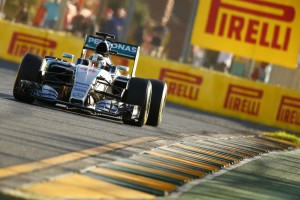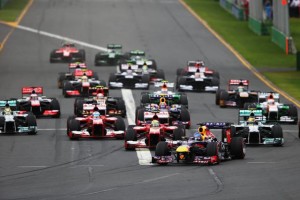
The question at the forefront of everything is can Ferrari take the fight to Mercedes. All indications are that the Italian team has made strides since last year and has closed the gap to Mercedes. All that remains to be seen is how close they can get.
As F1 2016 gets under way this season will be longest in the sport’s history with 21 races. Germany’s Hockenheim makes a return to the calendar and Azerbaijan hosts its first ever race on the Baku City streets. The confirmation of the US grand prix gives the teams an added bonus. The F1 sporting regulation state that one engine must be used for four race weekends. As the US Gp makes it 21 races the teams will be given a fifth engine thanks to the wording of the rule.
When the change to the qualifying format was announced it left many perplexed. The quali format hadn’t been a bad one so why fix something that isn’t broken? But, let’s give it chance and see how it pans out.
The one hour session will still consist of three parts. Q1 will be 16 minutes, after the first seven the slowest car is eliminated. Thereafter, the slowest car is eliminated every 90 seconds. Seven drivers will be eliminated while 15 advance to Q2.
 Q2 will be a 15 minute session with the slowest driver eliminated after 6 minutes. Likewise, every 90 seconds will see the slowest car eliminated. Seven drivers will be eliminated in this session with eight advancing to Q3. The Q3 session will run for fourteen minutes with the slowest driver eliminated after five minutes. The slowest driver will continue to be eliminated every 90 seconds. Two drivers will remain in the final 90 seconds of the session to shoot it out for pole position.
Q2 will be a 15 minute session with the slowest driver eliminated after 6 minutes. Likewise, every 90 seconds will see the slowest car eliminated. Seven drivers will be eliminated in this session with eight advancing to Q3. The Q3 session will run for fourteen minutes with the slowest driver eliminated after five minutes. The slowest driver will continue to be eliminated every 90 seconds. Two drivers will remain in the final 90 seconds of the session to shoot it out for pole position.
An interesting aspect of this style of qualifying will be that the quickest cars will no longer be able to rely on getting through to the second part of qualifying on the harder of their tyre selection. It’s sure to throw the cat amongst the pigeons when there is rain about, and if it’s a lap longer than 1 minute 30 seconds. And let’s be honest anything that adds a bit of drama and intrigue is never a bad thing. What the new format has in its favour is that it takes the excitement from the final ten minutes of the session and spreads it throughout the entire hour.
 The Albert Park circuit is a well known one. But there are many unknowns at the first race of the season. A new qualifying format, new tyre regulations, more driver freedom on strategy calls, to name a few. The clampdown on radio communication from the pitwall carries its own connotation, especially where the start of the race is concerned. Drivers are not allowed any feedback during the formation lap and are only being allowed to use one clutch at the start. This combined with Albert Park’s tight turn one could result in dramatic start to the grand prix. And all of this has the potential to combine into an explosive season-opening race.
The Albert Park circuit is a well known one. But there are many unknowns at the first race of the season. A new qualifying format, new tyre regulations, more driver freedom on strategy calls, to name a few. The clampdown on radio communication from the pitwall carries its own connotation, especially where the start of the race is concerned. Drivers are not allowed any feedback during the formation lap and are only being allowed to use one clutch at the start. This combined with Albert Park’s tight turn one could result in dramatic start to the grand prix. And all of this has the potential to combine into an explosive season-opening race.
Mercedes has chosen to play up Ferrari’s performance so far. Choosing to send both Nico Rosberg and Niki Lauda into the press with statements of Ferrari being a great threat. It could just be some clever psychological play by the champions. Or it could be real and we could in for a F1 season to be remembered. One way or the other the more than 100 day wait is finally over.


